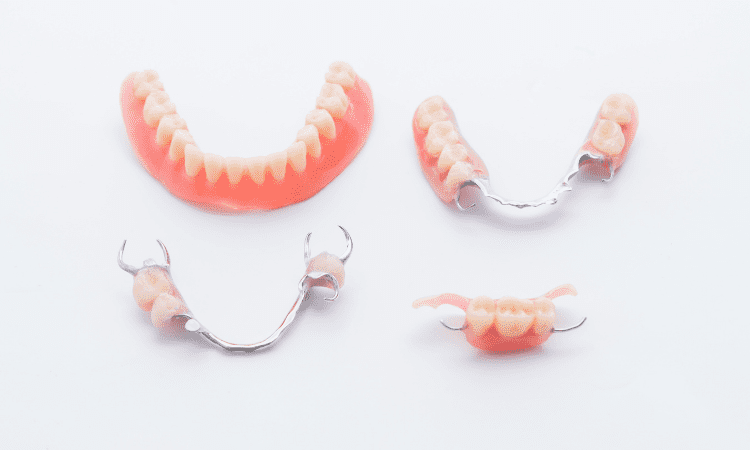When it comes to replacing missing teeth, patients often face a choice between partial dentures and dental bridges. Both options aim to restore functionality and enhance aesthetics, but they differ in design, maintenance, and suitability. Understanding these differences can help patients make informed decisions.

Understanding Partial Dentures
Partial dentures offer a practical solution for individuals with multiple missing teeth. These dental appliances consist of replacement teeth attached to a gum-colored acrylic base. They often include metal clasps or precision attachments for stability.
Dentists recommend partial dentures for patients who cannot support a bridge. These dentures can be removed for cleaning, which often simplifies oral hygiene routines. The design of partial dentures varies to accommodate individual needs. Some models use flexible materials, offering increased comfort. Others employ rigid bases for enhanced durability.
Partial dentures could restore both functionality and appearance. They often allow patients to chew and speak with greater ease. The cost of partial dentures depends on several factors. These include the materials used and the complexity of the design. Insurance policies may cover a portion of the expense. Patients should consult their provider for specific coverage details.
Exploring Dental Bridges
Dental bridges serve as another effective option for replacing missing teeth. A typical bridge consists of two crowns anchoring a false tooth, known as a pontic. The crowns fit securely over natural teeth or dental implants. This configuration often provides stability and a natural appearance.
Unlike partial dentures, bridges remain fixed in the mouth. They do not require removal for cleaning, simplifying daily care. Dentists often recommend bridges for patients with one or two missing teeth. Bridges could help maintain the shape of the face by preventing bone loss. They also help stop remaining teeth from shifting into gaps, preserving the alignment of the bite.
The cost of dental bridges can vary widely. Factors influencing price include the materials used and the number of teeth involved. Insurance may cover part of the cost, but coverage varies. Patients should verify their benefits with their insurance provider.
Comparing Durability and Maintenance
Partial dentures require regular maintenance to ensure longevity. They need removal for cleaning and soaking in a denture cleaner overnight. Patients must also brush them daily to remove food particles and plaque. Despite careful maintenance, dentures can wear down over time. The acrylic base and replacement teeth may require adjustments. Dentists can reline or remake them as needed.
Dental bridges, on the other hand, offer a more permanent solution. They require routine oral hygiene practices, such as brushing and flossing daily. Special flossing tools can help clean around the bridge. With proper care, bridges can last many years. They often outlast partial dentures due to their fixed nature.
Regular dental check-ups are essential for both options. These visits allow dentists to monitor the condition of the dentures or bridge. They can make adjustments to ensure optimal function and comfort.
Evaluating Comfort and Fit
Partial dentures may initially feel bulky or foreign in the mouth. Patients often need a period of adjustment to get used to them. Dentists can make adjustments to improve fit and comfort. A proper fit helps prevent irritation and discomfort to the gums and surrounding tissues. Some patients may experience sore spots during the adjustment period.
Dental bridges, in contrast, offer a more natural feel. They fit snugly over existing teeth or implants. This design often provides stability and comfort. Patients usually adapt to them more quickly than to partial dentures. Both options require a period of adaptation. Patients should communicate any discomfort to their dentist for prompt adjustments.
Deciding Based on Oral Health
Dentists evaluate the patient’s oral health before recommending a treatment. They consider factors such as bone density and gum health. This approach ensures optimal function and aesthetics. Choosing the right option involves a thorough assessment of the patient’s oral health. Dentists guide patients through this process, ensuring the best outcome.
North Dental Professionals can help you decide between partial dentures and dental bridges. Dr. Paul Chaiken offers expert advice tailored to your needs. Our team provides comprehensive dental care. Contact our office today to schedule a consultation and learn more about your treatment options.
